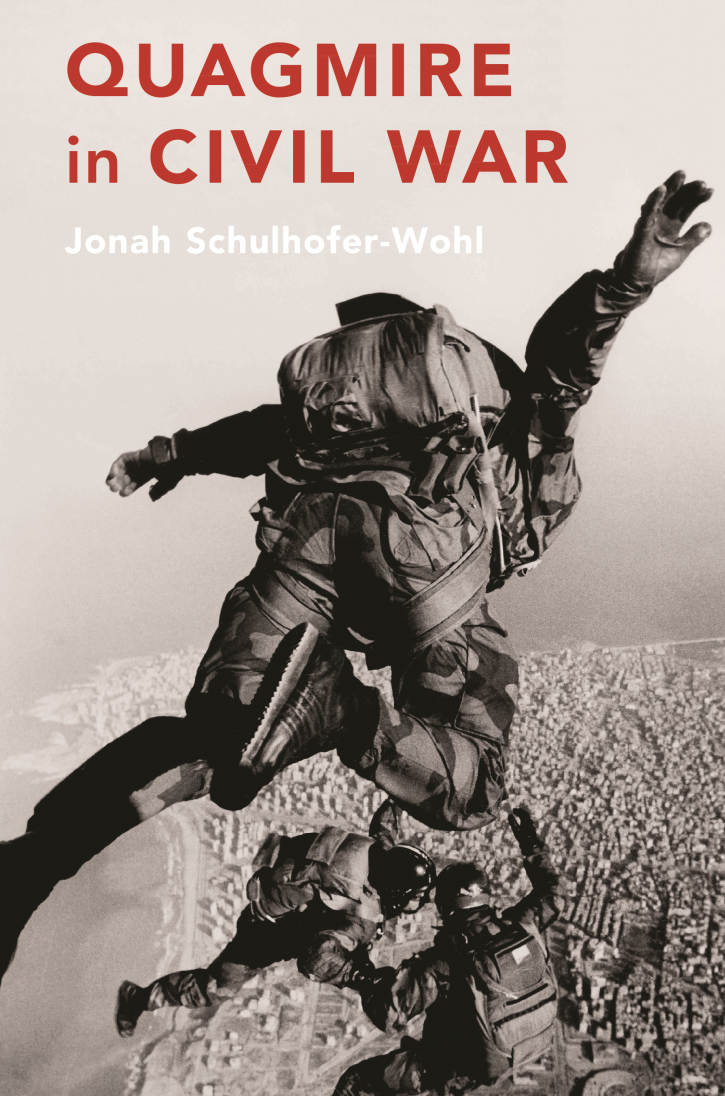Book Review: Quagmire in Civil War

Jonah Schulhofer-Wohl presents a compelling case for why we must think anew about how civil wars end and how the concept of quagmire can aid us in this task. His book is essential reading for scholars interested in war-termination, civil war, and conflict resolution.
Tempting irony, Quagmire in Civil War by Jonah Schulhofer-Wohl is a triumph. Working on the valuable insight that quagmires are “made, not found,” it examines why and how some civil wars, and not others, degenerate into protracted conflict. One doesn’t have to ponder too long or too hard to discover reasons why this is a question we should care about. Recent news reports from Syria, Ukraine, Iraq, Afghanistan, and Yemen take care of that. What, then, can we learn from this book?
Analytically robust, tightly argued, and concisely presented, Quagmire in Civil War does not get bogged down in unnecessary detail or outstay its welcome. Carefully and attractively put together, it presents a compelling case for why we must think anew about how civil wars end and how the concept of quagmire can aid us in this task. This book will be essential reading for scholars interested in war-termination, civil war, conflict resolution, as well as the ongoing conflicts in Chad and Yemen, while the case-based research it presents will appeal to historians of the Lebanese Civil War. A scholarly text, it makes few concessions to the layperson or casual reader, but people who are curious about the dynamics of civil war will nevertheless find it a rewarding study.
Before going any further, I will take this opportunity to come clean: I have skin in the game. Having spent the past decade writing a book on how the just war tradition addresses the concept of victory, I have a baseline understanding of the general scholarly literature on how wars end. That said, the material and methods covered by Schulhofer-Wohl in this book are sufficiently different from my own as to be brand new to me.
I want in this review to focus on what I see as the two major contribution this book makes to our understanding of how wars end. These contributions are, we shall see, closely linked to one another, with the latter following from the former.
The first contribution, then, is the simple but vital (and, I think, overdue) task of explicating what is actually meant by “quagmire.” What, in other words, does it mean to say that a conflict has descended into quagmire? Rather than just treating this term as an evocative metaphor, Schulhofer-Wohl approaches it as a substantive concept that can help us understand why some (but not all) conflicts assume a prolonged rather than brisk or decisive form. In so doing, the author resists two lazy assumptions that haunt how people habitually think and talk about quagmires. Quagmires, he argues, are not specific to particular actors or theatres of conflict, nor should they be understood solely in relation to the duration of war. Quagmires are not just something that happen in Afghanistan and Yemen, and there is more going on here than merely the fact of the conflict in question dragging on. Rather, a quagmire, we are told, is “any situation that, once entered, is difficult or impossible to leave.” Key, then, to the concept of quagmire is the notion of entrapment. On this account, a conflict assumes the properties of a quagmire when the belligerents involved have little to gain from continuing to fight but much to lose by withdrawing. A quagmire, thus construed, is the strategic predicament or dead-end that, once manufactured, is nigh-impossible to escape.
The significance of this work should not be underestimated. What Schulhofer-Wohl is giving us here is not just an exercise in definition or typology, but an analytical vocabulary that allows us to capture the strategic dynamics of war-termination. Going beyond the common-sense range of meanings that attach to “quagmire,” he deduces from it a set of terms and axioms that can guide our understanding of how and when conflicts become strategic stalemates.
This brings us to the second contribution this book makes, namely, the explanatory framework it devises to account for the factors that give rise to quagmire. If quagmires are not found, but made, what does this process look like? What are the variables involved? How do they interact and crosscut? The answers to these questions furnished by Schulhofer-Wohl are illuminating. He contends that any explanation of how, when, and why quagmires are produced must account for the interlocking relation between three sets of interactions that are usually treated independently of one another: between the warring parties themselves, between each warring party and their foreign backers, and between these foreign backers. Against this background, the stakes of the conflict, the degree to which foreign assistance can function as a subsidy that enables the belligerents to continue fighting, and the style or type of fighting that they choose to engage (i.e., high-cost operations designed to hold territory or low-cost non-territorial operations) will combine to create conditions that are more or less conducive to quagmire. Working within this framework, Schulhofer-Wohl applies a game theoretical approach to a single-N case study of Lebanon and a large-N survey to arrive at a theory of what he terms the pathways to quagmire. This work is satisfying in both a theoretical and an empirical respect, but what makes it truly stand out is the platform it furnishes for further research in this field.
There are some interesting avenues of inquiry that the book hints at but does not develop. Consider, for example, the opening sentence of the book: “The notion of quagmire lurks in the shadows of the corridors of power.” Prime ministers, opposition leaders, flag officers, bureaucrats, journalists, and ordinary people, Schulhofer-Wohl continues, all refer to it. Wouldn’t it be interesting, then, to learn more about the discursive power of this concept, that is, to learn more about the role it plays in guiding and structuring how we think about and approach warfare. If “decisive victory” might reasonably be regarded as a myth that nevertheless orders how warfare is understood and practiced, what (if any) work does the concept of quagmire do in this domain? The author does not pursue this line of questioning. This is perhaps because it lies beyond the purview of his rationalist approach. This is both a shame, for it is a missed opportunity, but also somewhat beside the point, for it is not the purpose of this book. Others, one hopes, will follow up on this idea.
It is enough for now to take this very fine book on its own terms. Lucid and humanistic, it reminds us that quagmires do not exist in nature, but instead are generated by human choices, decisions, and actions. It leaves us with a warning that we (continue to) ignore at our peril: “[The] fundamental characteristic of civil wars can be counted among its many cruelties: It appears a state of affairs much easier to embark upon than to find an exit from.”
This is a review of Jonah Schulhofer-Wohl, Quagmire in Civil War (Cambridge University Press, 2020). ISBN: 1108486762 (hardcover) & 1108708269 (paperback).
Cian O’Driscoll is a Senior Fellow in the Department of International Relations at the Australian National University. Cian can be reached at Cian.odriscoll@anu.edu.au.
This article is published under a Creative Commons License and may be republished with attribution.





